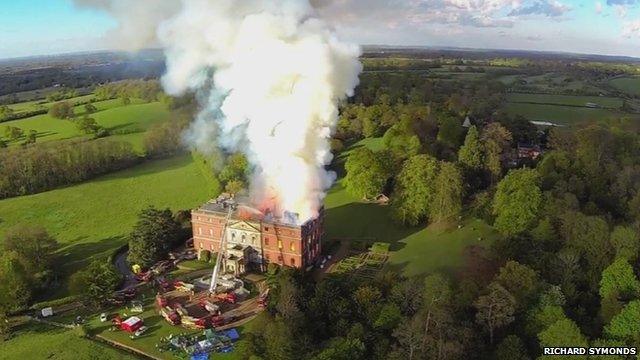What now for Clandon Park House? The fate of fire-hit stately homes
- Published
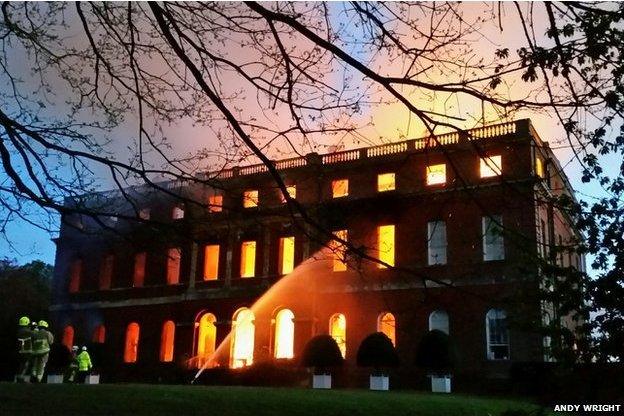
The fire began in the basement of the house and spread to the roof
A stately home in Surrey has been left a burnt-out shell after a fire ripped through the building. The future of Clandon Park House is unclear, but what has happened to other grand properties following major blazes?
The immediate sense of shock and loss among staff working at Clandon Park has quickly been replaced by "a steely determination", according to Helen Ghosh, director general of the National Trust.
It will take some time to assess the full scale of the damage before options for restoring the house are considered.
However, Dr Simon Thurley, outgoing chief executive of Historic England and English Heritage, said properties like Clandon are usually rebuilt.
"So many great houses that we know of have had fires, going right the way back to the Great Fire of London and beyond," he said.
"People generally do rebuild them, mainly because they are incredibly valuable assets."

Witley Court
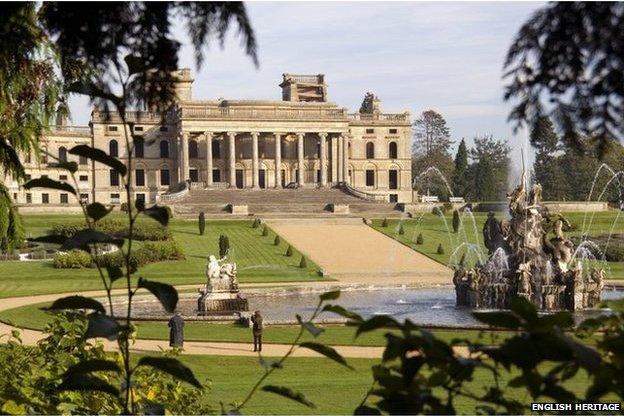
Witley Court is a popular attraction, despite the building being a shell
Witley Court in Worcestershire was one of England's greatest country houses, until a fire ripped through it in 1937.
The west side of the property was unaffected, but owner Sir Herbert Smith decided to sell the estate rather than rebuild the house.
It was subsequently stripped for scrap, left to fall into further ruin and never lived in again.
But in a strange way, the fire at Witley Court helped turn a private home enjoyed only by royalty and aristocrats into an attraction for the general public.
The ruins are among the most spectacular in England, and visitors flock to see the impressive architecture and wander the landscaped gardens.

Bob Dylan went ghost hunting at Witley Court in the mid-1960s

The Perseus and Andromeda fountain has been restored by English Heritage
The gardens and ruins were used as the location for a music video for Whiter Shade of Pale by Procol Harum, external in 1967.
Bob Dylan also went ghost hunting there when he visited Worcestershire in the mid-1960s.
Witley Court is now cared for by English Heritage and is in a much better state than it would have been when Dylan visited.
The gardens have been restored, along with the Perseus and Andromeda fountain, which is larger than both the Trevi Fountain in Rome or the fountains at Versailles.

Windsor Castle
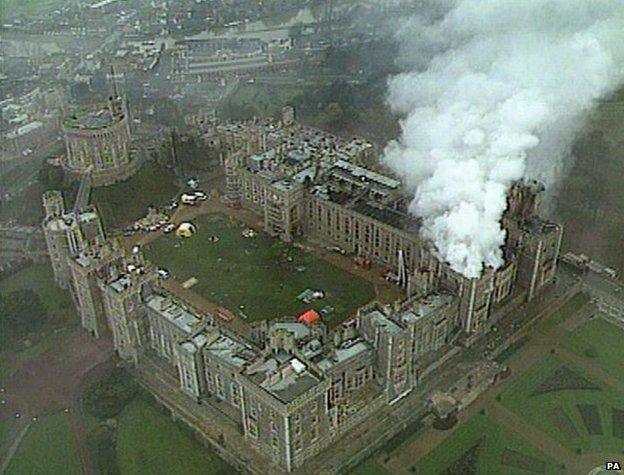
The fire at Windsor Castle is thought to have been started by a spotlight shining on a curtain
The Queen dubbed 1992 her "annus horribilis", or horrible year, partly because of a fire that destroyed much of Windsor Castle on 20 November.
It sparked a public row over who should pay for repairs to the royal residence - taxpayers or the Royal Family - and a wider debate about financing of the monarchy.
As a result, the Queen offered to pay tax on her private income and restrict the number of Royal Family members paid from the public purse.

The Queen dubbed 1992 her "annus horribilis", partly because of a fire at Windsor Castle
The Queen also said she would meet 70% of the Windsor Castle restoration cost, and opened Buckingham Palace to the public in order to generate extra funds.
An entry fee was also introduced for people who wished to enter the grounds of Windsor Castle.
The work, which cost £37m, was completed ahead of schedule in 1997.

Dunsland House
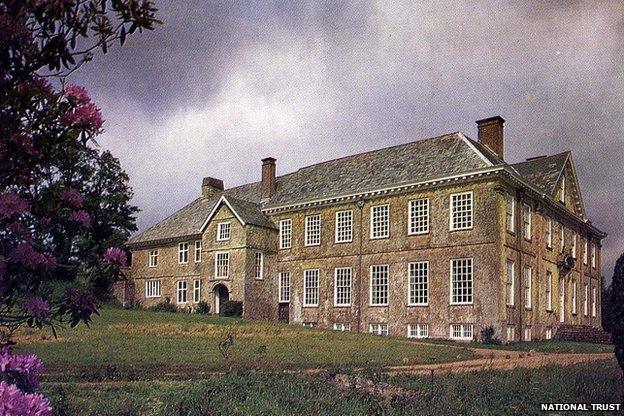
There is now a plaque where Dunsland House once stood
Dunsland House in Devon was in the final stages of decay when the National Trust acquired it in 1954, then embarked on the demanding task of restoring and furnishing the property.
The work had been completed and Dunsland House was due to open to visitors when it caught fire in November 1967, and was reduced to a smoking ruin within a few hours.
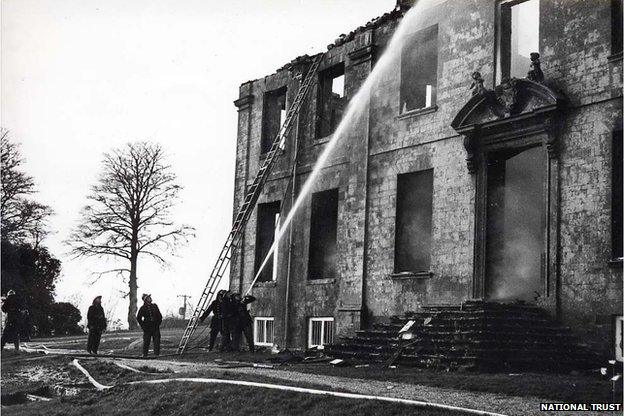
Restoration work had been completed when the building caught fire
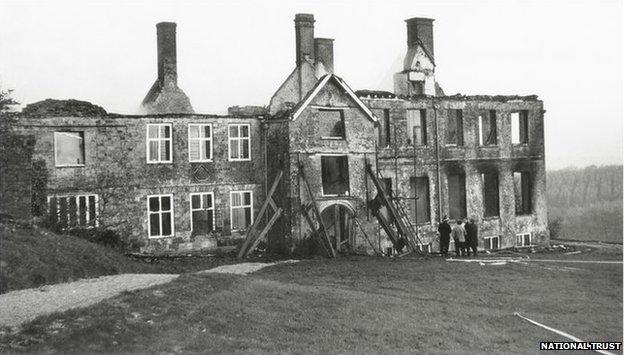
The ruins, which were thought to be unsafe, were demolished
Even if a restoration had been financially possible, the walls were so badly cracked they would have needed to be demolished, and the house built again.
So the National Trust demolished the ruins, which were considered dangerous, and a plaque now records what once stood there.
But despite the house being long gone, Dunsland has become popular with visitors who come to walk around the parkland and admire the scenic views.

Uppark

The fire at Uppark was caused by builders who were using a blowtorch to repair lead flashing on the roof
Uppark house in West Sussex was devastated by a fire in August 1989, days before a restoration was due to be completed.
The fire triggered the largest revamp of its kind taken on by the National Trust, although returning Clandon Park House to its former glory is expected to be an even bigger task.
Hundreds of craftsmen were involved in restoring Uppark, and forgotten skills such rococo plasterwork modelling were rediscovered in the process.
The building reopened in 1995.
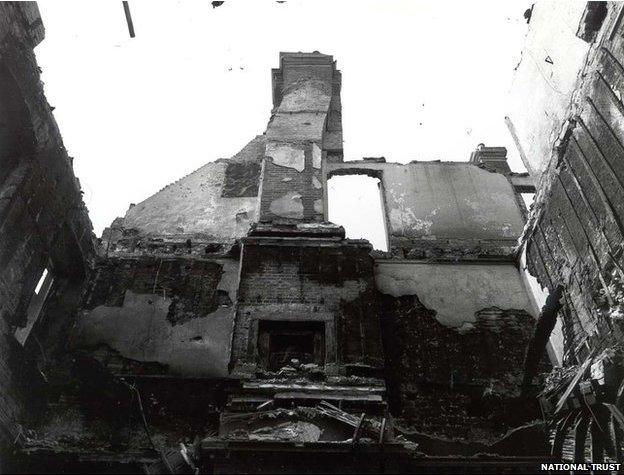
The fire destroyed the roof of the house and left it a shell

The house was restored, reopening in 1995
Dr Thurley said the National Trust "did a tremendous job of making the most of a terrible tragedy".
"When you go there you learn about how the National Trust saved the building from the terrible state that it was in, and the stimulation to craftsmanship," he said.
"There's a very good exhibition explaining how it all went together.
"I think that they really did make the most of what was obviously a really ghastly situation."

Hampton Court
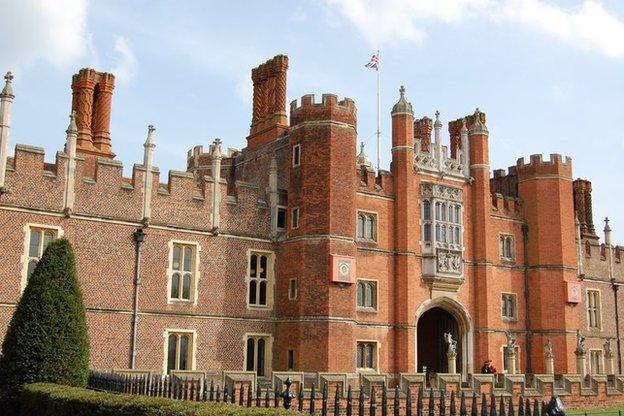
It has been argued that the fire transformed Hampton Court for the better
Hampton Court in Richmond upon Thames is one of only two surviving palaces out of the many owned by Henry VIII, but its future looked uncertain when a fire swept through in 1986.
The fire started in a "grace and favour" apartment of 86-year-old widow Lady Daphne Gale, who unfortunately died.
Management of the palace was called into question in the aftermath of the fire.
This in turn led to the formation of Historic Royal Palaces (HRP) in 1989, to manage six palaces including Hampton Court.
Dr Thurley became the first curator of HRP. As well as repairing the damage to Hampton Court he set about making it more appealing to visitors.
The restorations were the biggest seen at the palace since the 1880s and were largely completed in 1995.
Since then it has been argued that the fire transformed Hampton Court for the better, external.
- Published30 April 2015
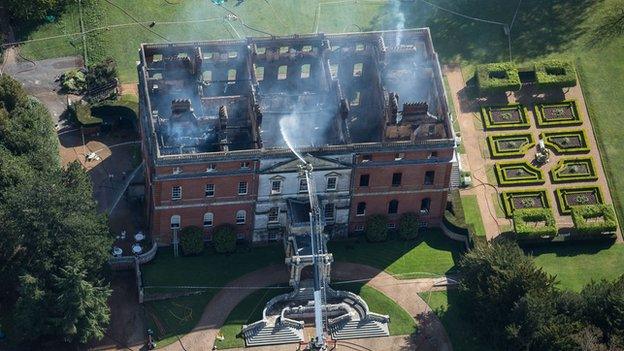
- Published30 April 2015
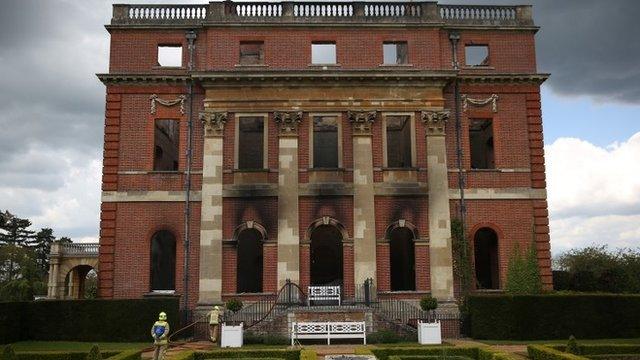
- Published30 April 2015
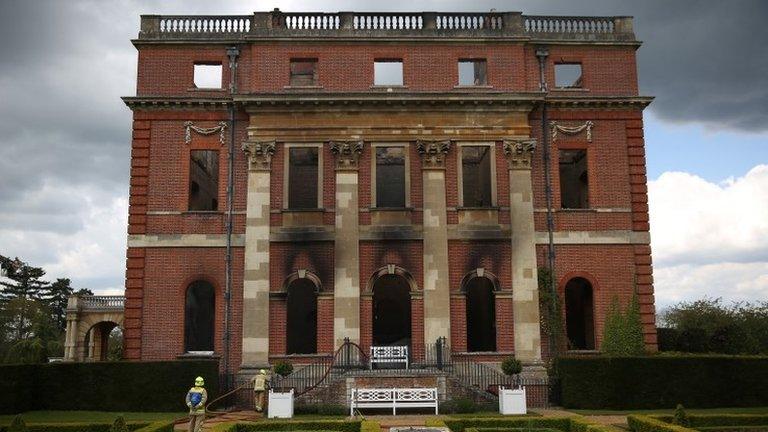
- Published30 April 2015
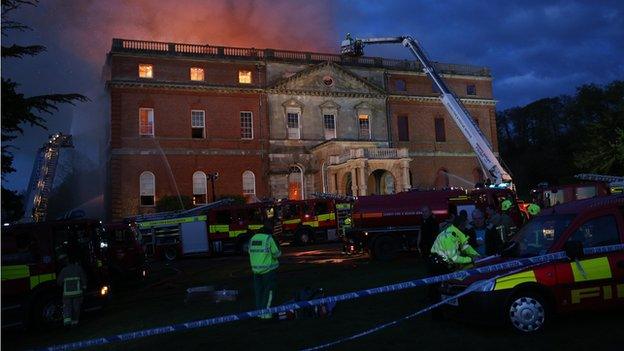
- Published29 April 2015

- Published30 April 2015
